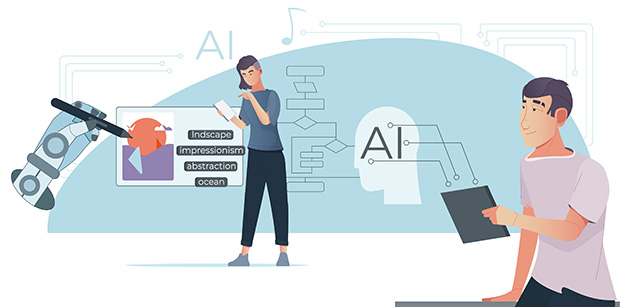5 Applications of AI to Improve Web Experience
Enhancing user experience is indeed a never-ending task. Leveraging AI advancements, web developers and designers have a powerful arsenal of options to improve user interactions and satisfaction. In this article, we explore five AI applications that help websites deliver more personalized, intuitive, and enjoyable experiences for users across various platforms and devices.
Emotional Chatbots and Virtual Companions
AI-powered Emotional Chatbots and Virtual Companions use natural language processing to understand user emotions and respond empathetically. Through sentiment analysis, they tailor interactions to provide personalized support and companionship, fostering stronger user engagement and satisfaction. These systems continuously learn from user feedback and interaction history to refine their emotional responses, ultimately creating a more supportive and enjoyable web experience. By offering emotional validation and empathy, they enhance user relationships and contribute to a more fulfilling online interaction.
Image Recognition and Visual Search
AI-based image recognition analyzes images to identify objects, scenes, and patterns, enabling users to search for products or content by uploading images (visual search). By understanding visual content, they enable more accurate search results and recommendations based on user-uploaded images. Customer analytics consulting providers recommend implementation of visual search to increase user engagement and satisfaction. By providing accurate and relevant search results based on visual content, AI-driven image recognition simplifies information retrieval and facilitates intuitive exploration. It streamlines browsing and shopping processes, ultimately leading to higher user satisfaction and conversion rates.
A/B Testing Automation
AI automates A/B testing processes by rapidly analyzing user interactions with different design variations. Using machine learning algorithms, it rapidly evaluates the effectiveness of design elements such as layouts, colors, and calls-to-action.This data-driven approach streamlines the optimization process, enabling designers to make informed decisions that enhance the overall web experience and drive better user engagement and conversion metrics.
Emotion Recognition
AI-driven recognition systems analyze facial expressions, voice tones, or text sentiment to gauge user emotions. By understanding emotional responses, websites can tailor content, recommendations, and interactions to better meet user needs. Moreover, it enables websites to adapt in real-time based on user emotions, creating more meaningful and enjoyable interactions. By acknowledging and responding to user emotions, AI-driven emotion recognition fosters empathy and connection, ultimately leading to a more engaging and satisfying online interaction.
Smart Content Formatting
AI algorithms automatically format content for optimal readability and accessibility across different devices and screen sizes, ensuring consistent and user-friendly experiences in web pages, emails, and digital documents. By analyzing user preferences, browsing habits, and device capabilities, it ensures consistent and user-friendly experiences on websites and applications. This technology enhances web experiences by delivering content in a format that is easy to consume and navigate, improving user engagement, satisfaction, and accessibility for a wider audience.
As a Footnote
From understanding user emotions to automating testing processes and optimizing content formatting, AI's influence permeates every facet of the digital experience, promising not just efficiency, but empathy. By integrating these advancements into their web design strategies, businesses can stay ahead of the curve, delivering experiences that captivate users and drive meaningful engagement.
Copyright © . All Rights Reserved
